Constitutive expression of the alpha4 integrin correlates with tumorigenicity and lymph node metastasis of the B16 murine melanoma
- PMID: 20126475
- PMCID: PMC2814355
- DOI: 10.1593/neo.91604
Constitutive expression of the alpha4 integrin correlates with tumorigenicity and lymph node metastasis of the B16 murine melanoma
Abstract
The lymphatic system plays a critical role in melanoma metastasis, and yet, virtually no information exists regarding the cellular and molecular mechanisms that take place between melanoma cells and the lymphatic vasculature. Here, we generated B16-F1 melanoma cells that expressed high (B16alpha(4)+) and negligible (B16alpha(4)-) levels of alpha(4) integrin to determine how the expression of alpha(4) integrins affects tumor cell interactions with lymphatic endothelial cells in vitro and how it impacts lymphatic metastasis in vivo. We found a direct correlation between alpha(4) integrin expression on B16-F1 melanoma cells and their ability to form adhesive interactions with monolayers of lymphatic endothelial cells. Adhesion of B16-F1 melanoma cells to lymphatic endothelial cells was mediated by the melanoma cell alpha(4) integrin binding to its counterreceptor, vascular cell adhesion molecule 1 (VCAM-1), that was constitutively expressed on the lymphatic endothelial cells. VCAM-1 was also expressed on the tumor-associated lymphatic vessels of B16-F1 and B16alpha(4)+ tumors growing in the subcutaneous space of C57BL/6J mice. B16-F1 tumors metastasized to lymph nodes in 30% of mice, whereas B16alpha(4)+ tumors generated lymph node metastases in 80% of mice. B16-F1 melanoma cells that were deficient in alpha(4) integrins (B16alpha(4)-) were nontumorigenic. Collectively, these data show that the alpha(4) integrin expressed by melanoma cells contributes to tumorigenesis and may also facilitate metastasis to regional lymph nodes by promoting stable adhesion of melanoma cells to the lymphatic vasculature.
Figures
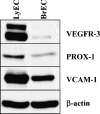
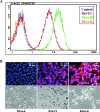
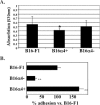

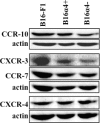
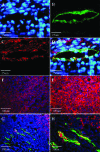
Similar articles
-
FAK inhibition reduces metastasis of α4 integrin-expressing melanoma to lymph nodes by targeting lymphatic VCAM-1 expression.Biochem Biophys Res Commun. 2019 Feb 19;509(4):1034-1040. doi: 10.1016/j.bbrc.2019.01.050. Epub 2019 Jan 17. Biochem Biophys Res Commun. 2019. PMID: 30660359 Free PMC article.
-
Expression of CC chemokine receptor-7 and regional lymph node metastasis of B16 murine melanoma.J Natl Cancer Inst. 2001 Nov 7;93(21):1638-43. doi: 10.1093/jnci/93.21.1638. J Natl Cancer Inst. 2001. PMID: 11698568
-
CXCR4 enhances adhesion of B16 tumor cells to endothelial cells in vitro and in vivo via beta(1) integrin.Cancer Res. 2003 Oct 15;63(20):6751-7. Cancer Res. 2003. PMID: 14583470
-
Melanoma cells use Thy-1 (CD90) on endothelial cells for metastasis formation.Am J Pathol. 2013 Jan;182(1):266-76. doi: 10.1016/j.ajpath.2012.10.003. Epub 2012 Nov 16. Am J Pathol. 2013. PMID: 23159525
-
Integrins as therapeutic targets in the organ-specific metastasis of human malignant melanoma.J Exp Clin Cancer Res. 2018 Apr 27;37(1):92. doi: 10.1186/s13046-018-0763-x. J Exp Clin Cancer Res. 2018. PMID: 29703238 Free PMC article. Review.
Cited by
-
Overcoming intratumor heterogeneity of polygenic cancer drug resistance with improved biomarker integration.Neoplasia. 2012 Dec;14(12):1278-89. doi: 10.1593/neo.122096. Neoplasia. 2012. PMID: 23308059 Free PMC article.
-
siRNA-mediated silencing of integrin β3 expression inhibits the metastatic potential of B16 melanoma cells.Oncol Rep. 2012 Nov;28(5):1567-73. doi: 10.3892/or.2012.1963. Epub 2012 Aug 10. Oncol Rep. 2012. PMID: 22895695 Free PMC article.
-
Tetraspanin proteins promote multiple cancer stages.Nat Rev Cancer. 2014 Jan;14(1):49-60. doi: 10.1038/nrc3640. Nat Rev Cancer. 2014. PMID: 24505619 Review.
-
Transcriptional profiling of breast cancer-associated lymphatic vessels reveals VCAM-1 as regulator of lymphatic invasion and permeability.Int J Cancer. 2019 Nov 15;145(10):2804-2815. doi: 10.1002/ijc.32594. Epub 2019 Aug 8. Int J Cancer. 2019. PMID: 31344266 Free PMC article.
-
Lymph Vessels Associate with Cancer Stem Cells from Initiation to Malignant Stages of Squamous Cell Carcinoma.Int J Mol Sci. 2023 Sep 2;24(17):13615. doi: 10.3390/ijms241713615. Int J Mol Sci. 2023. PMID: 37686421 Free PMC article.
References
-
- Balch CM. The role of elective lymph node dissection in melanoma: rationale, results, and controversies. J Clin Oncol. 1988;6:163–172. - PubMed
-
- Balch CM, Buzaid AC, Soong SJ, Atkins MB, Cascinelli N, Coit DG, Fleming ID, Gershenwald JE, Houghton A Jr, Kirkwood JM, et al. New TNM melanoma staging system: linking biology and natural history to clinical outcomes. Semin Surg Oncol. 2003;21:43–52. - PubMed
-
- Balch CM, Buzaid AC, Soong SJ, Atkins MB, Cascinelli N, Coit DG, Fleming ID, Gershenwald JE, Houghton A Jr, Kirkwood JM, et al. Final version of the American Joint Committee on Cancer staging system for cutaneous melanoma. J Clin Oncol. 2001;19:3635–3648. - PubMed
-
- Balch CM, Soong SJ, Gershenwald JE, Thompson JF, Reintgen DS, Cascinelli N, Urist M, McMasters KM, Ross MI, Kirkwood JM, et al. Prognostic factors analysis of 17,600 melanoma patients: validation of the American Joint Committee on Cancer melanoma staging system. J Clin Oncol. 2001;19:3622–3634. - PubMed
Publication types
MeSH terms
Substances
Grants and funding
LinkOut - more resources
Full Text Sources
Research Materials
Miscellaneous
